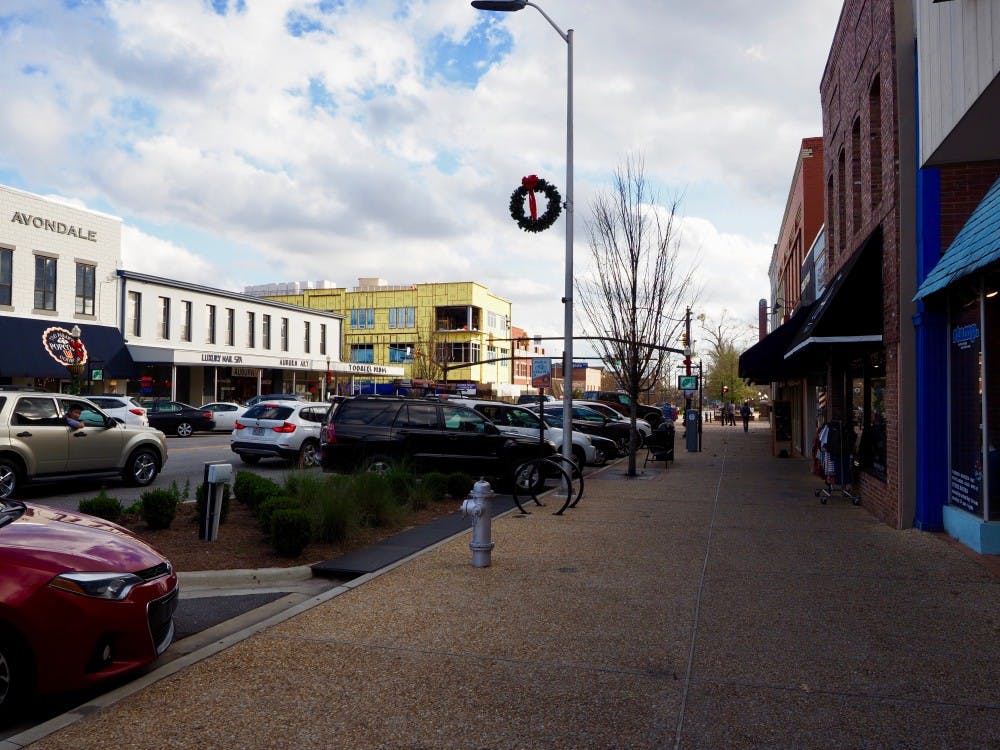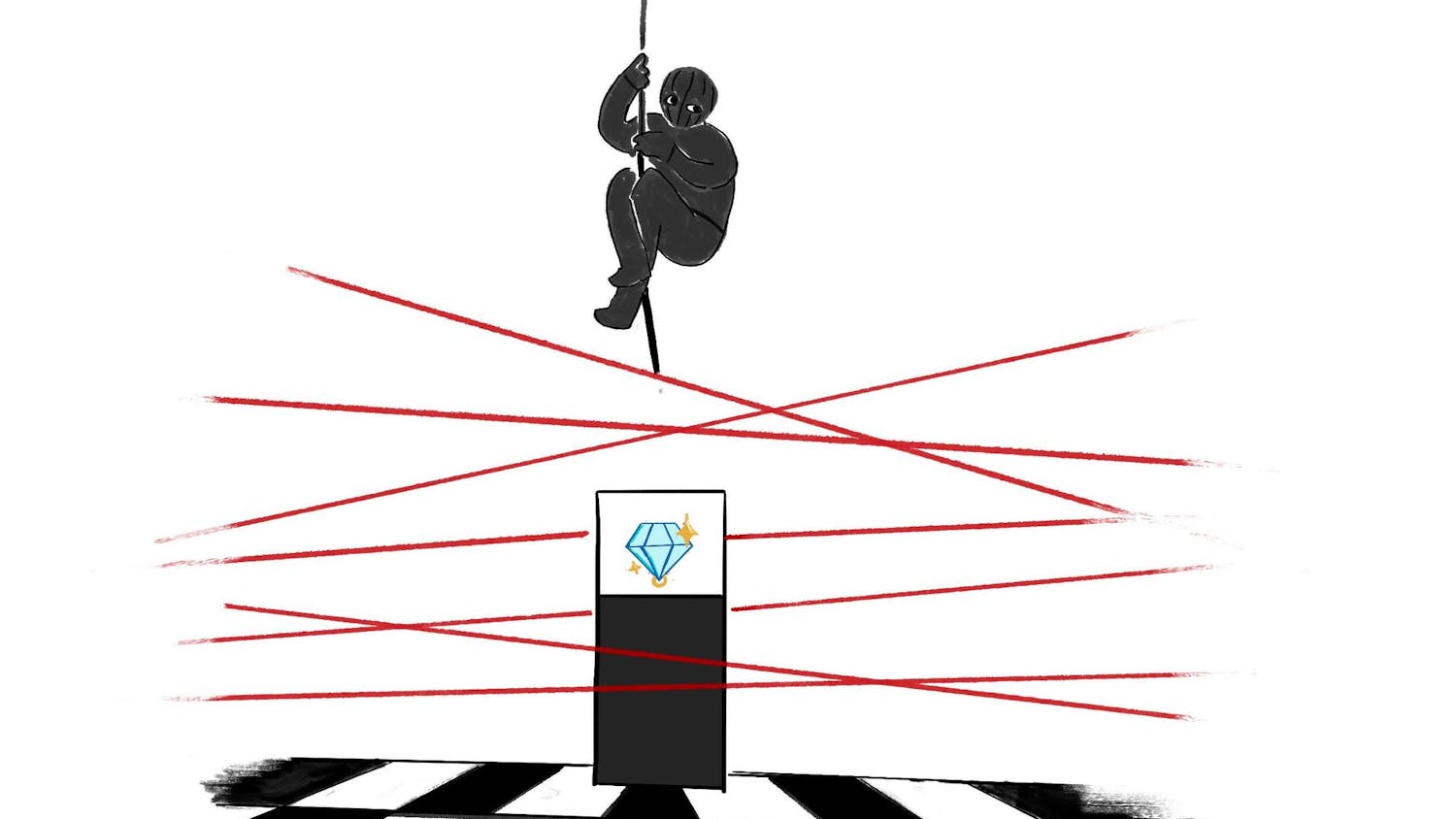Since 1836, Auburn residents have known one thing for sure: Auburn is The Loveliest Village on The Plains.
Or at least that’s the nickname associated with calling Auburn home. It comes from Oliver Goldsmith’s 1770 poem “The Deserted Village” in which he writes, ”Sweet Auburn! Loveliest village of the plain ... ”
Yet today, the city of Auburn has an estimated population of 63,793 and ranks as Alabama’s eighth largest city, according to the most recent United States Census estimates. It has undertaken nearly 40 new and expanded commercial projects since 1994 with a generated capital investment of more than $1.3 billion and 6,000 jobs.
It has one of the lowest unemployment rates in the state, a state-of-the-art research park and the Auburn University Regional Airport. The city’s growth is pushed in large part by the growth of Auburn University and a city school system that consistently ranks in the top 10 in the state. Enrollment in city schools has pushed past 8,500 and is expected to reach nearly 11,000 by 2024, according to the school system’s projections.
“You know,” said former Mayor Bill Ham. “It’s changed a bit since I was a kid.”
Born and raised in Auburn, the former 20-year mayor remembered the day the first Jack’s came to the town. He remembered when only one traffic light worked and no one believed in a prospective McDonald’s or a downtown building that could come close to rivaling the height of Auburn University’s Haley Center.
He attended Auburn University when it was just shy of 21,000 students and had no plans of a $25 million performing arts center or an $18 million engineering research laboratory. The town had only one movie theatre, a handful of grocery stores and absolutely no issue of traffic.
“Auburn 25 to 30 years ago was not a place that necessarily a lot of people wanted to graduate and hangout,” Ham said. “It wasn’t necessarily a place that that many young couples or young people wanted to be. They were looking to get out.”
But now that people are looking to get in, a question arises: Can Auburn still be considered a village?
Does a village have looming parking decks and an imminent Southern Living Hotel to span nearly half a block of the downtown strip? Does it have 450-bedroom housing complexes that shadow the one- or two-story downtown shops beneath them? Or a public-school system bursting at the seams with plans to build a second high school and a university with an enrollment soon to reach over 31,000?
“I think it all depends on what your definition of a village is,” Ham said.
Auburn’s population has grown by an estimated 20 percent since 2010 and has more than doubled since 1990, according to U.S. Census Bureau data.
“Simply put, the secret [of Auburn] is out,” Ham said.
And one of Auburn’s best kept secrets: its school system.
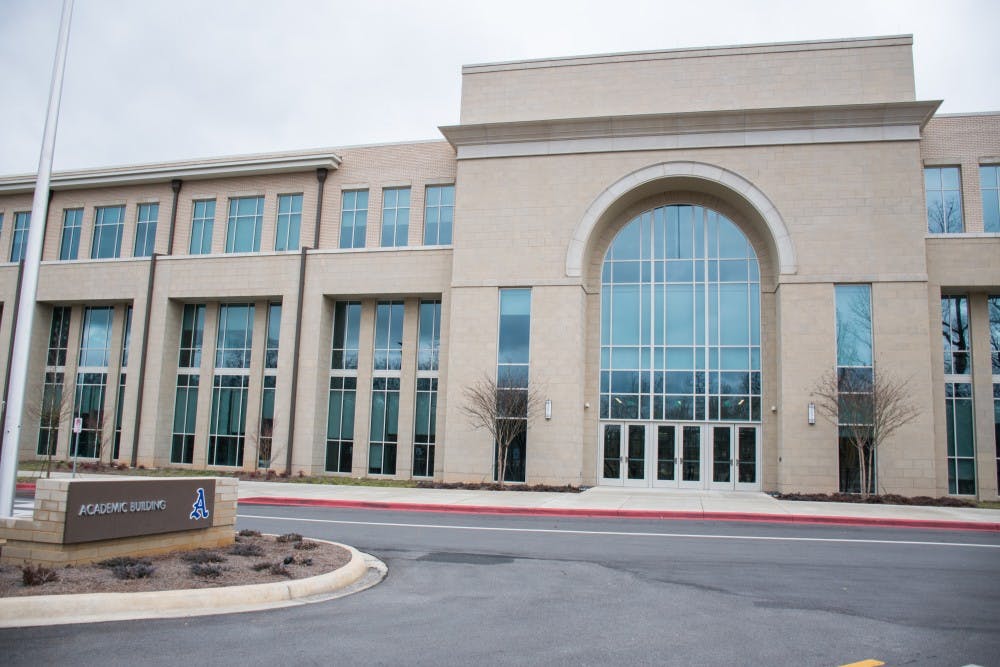
Auburn High School on Sunday, Feb. 4, 2018, in Auburn, Ala.
An Educational Cornerstone
According to Superintendent Karen DeLano, folks move to Auburn for a myriad of reasons, but one of the most influential factors that draws families to the community is the quality of education.
“This community truly values education,” she said. “The diversity of the population is such a positive for the students in many ways, and I find that this has been true in Auburn since the inception of the school system.”
Since 2012, DeLano has served as the Auburn City Schools superintendent. During her seven years, she has seen an influx of almost 2,000 students, as well as the opening of two new elementary schools and a new Auburn High School in 2017, now 350,000 square feet with a capacity for nearly 2,500 students.
“The fact that we have more excellent applicants than we have positions allows us to get the very best teachers and administrators available,” DeLano said. “The board of education members have high expectations for all of us.”
Thirteen schools comprise the system, with schools reaching maximum planned capacity or often times exceeding it. For the 2017-2018 academic year, Auburn City Schools provided kindergarten through 12th grade public education to over 8,501 students, an increase of 254 students from the 2015-2016 year. The system has seen an increase of over 2,100 students since the 2011-2012 academic year. And it’s not finished growing.
The projected number of students in grades nine–12 is 3,400, DeLano said. That growth will necessitate looking at additional facilities for secondary students, as well as junior high and middle school facilities.
“This being a university community, a community based on education and founded on education, the public schools, I think, the citizens just demand that they be good,” Ham said.
It’s not just the citizens’ demand that keeps the school system a cornerstone of the community’s success.
In 1986, then-Mayor Jan Dempsey put into place a funding mechanism in an attempt to make the school system a stable and increasingly effective part of the Auburn community.
The council began an appropriation of $600,000 from the city’s general fund. The fund had nothing to do with property tax or state funding.
Since then, the council has maintained an annual appropriation.
Currently, the council gives $17.5 million a year out of its general fund to support Auburn City Schools.
Out of four efforts in the last 30 years to raise property taxes, only one has found success, Ham said. Instead, the council has initiated other ways to fund the schools, such as through sales tax and growing the economy with industrial bases like GE Aviation and technology companies like Briggs and Stratton.
“As industries look to possibly locate in Auburn, the executives always ask about the school system and opportunities for children,” DeLano said. “The same things are asked by professors that are being recruited to Auburn University. The school system is a reflection of the community. Both are strong in Auburn.”
Both the city school system and the university have played a substantial role in the city’s growth. Since the 2011-2012 academic year, Auburn University has grown from 25,134 enrolled students to 30,440 in the 2018-2019 academic year, with a 21 percent increase in applications from 2017.
Yet the university’s enrollment is not the only factor it brings to the city’s development.
The partnership initiated between community and university has led to city developments such as new commercial projects, the Auburn Industrial Park and, in recent years, the construction of several new apartment complexes in the downtown area to house the swells of new citizens and students.
“I think the relationship has been there, but it’s grown through the years,” Ham said. “The city of Auburn would not be what it is without the university, and the university is growing.”
In his installation speech in spring 2018, Auburn University President Steven Leath unveiled a plan to hire 500 new tenure-track faculty by 2022, growing the current 1,144 tenure and tenured-tracked faculty to an estimated 1,250, accounting for typical retirement and attrition.
Leath said the increased number of instructors would potentially increase enrollment numbers and research and development projects the university undertakes.
Four major construction projects are also in progress on campus: the Jay and Susie Gogue Performing Arts Center, the Harbert College of Business Graduate Building, the Leach Science Center and the Gavin Engineering Research Laboratory.
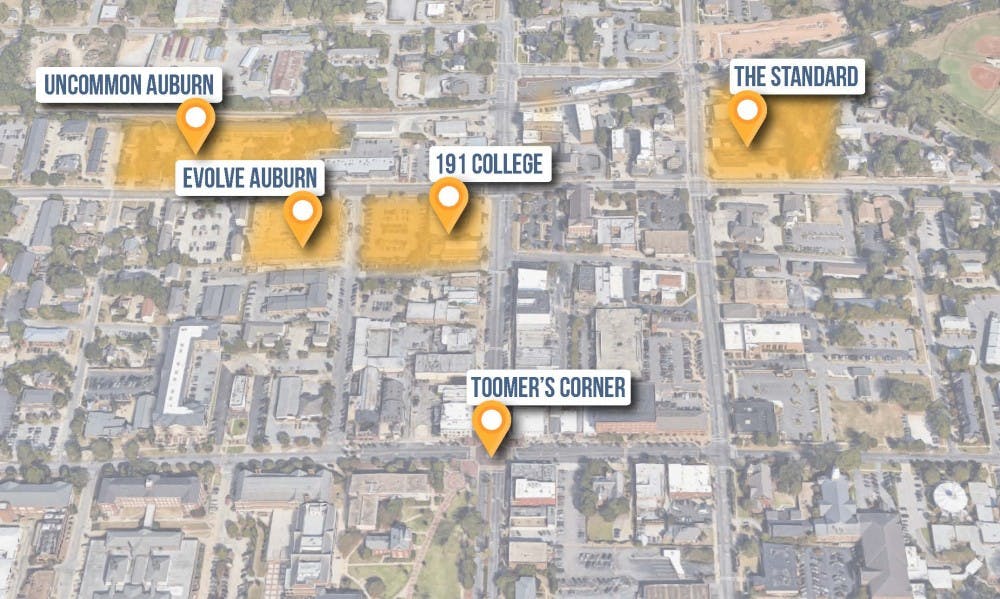
Moving Forwards and Upwards
Auburn is growing, and it’s growing fast.
“Dancing around the idea that Auburn is still a village isn’t necessarily fair,” Ham said.
From parking decks seemingly sprouting of the ground overnight to the abounding industries flocking to lay claim to a piece of the area, the growth is undeniable.
While Ham admits so many have jumped on the idea that Auburn will never be the same because of the copious changes, he remained focus on one aspect: the Auburn people.
Go downtown, Ham said. See J&Ms, the Ware Jewelers, Big Blue Deli, Acre, a number of what he referred to as “mom-and-pop downtown characters.”
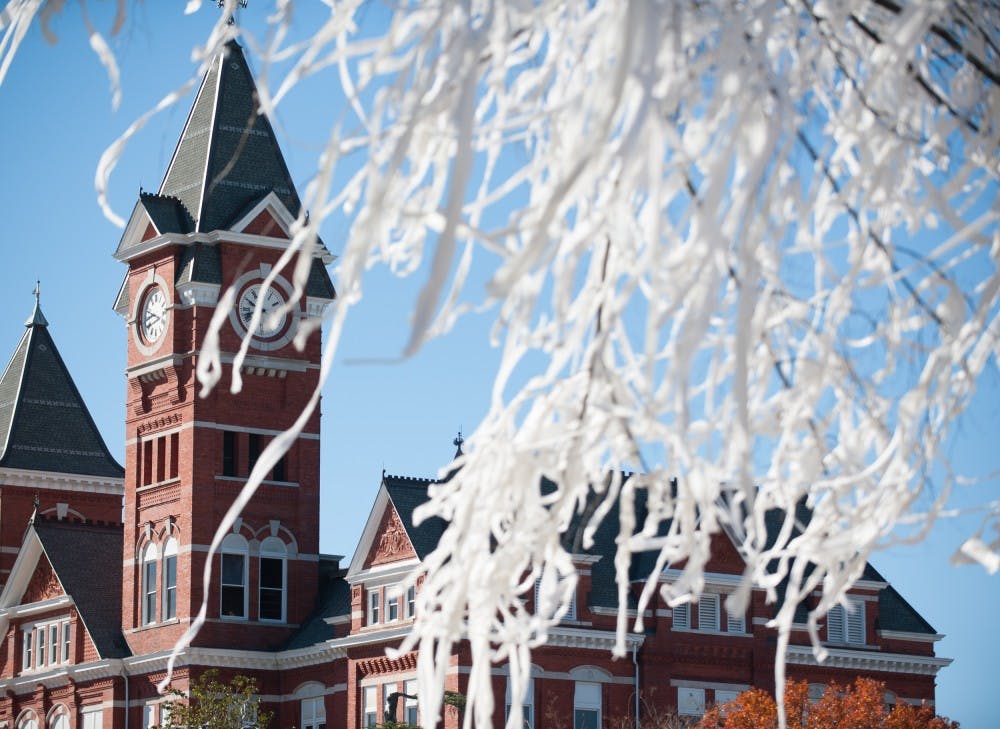
Toilet paper hangs from a tree in Samford Park on Sunday, Nov. 26 in Auburn, Ala.
“Those are the kinds of people that in my mind will always make Auburn what Auburn is,” Ham said.
DeLano admitted she also has a difficult time giving up the label of the Loveliest Village.
“We have several types of areas—university, industrial parks, city dwellings and suburban neighborhoods,” she said. “I don’t think the size will necessary change the entity of Auburn.”
Like Ham, DeLano said Auburn’s future reputation depends entirely on its people.
“Remaining the same as years of old is not possible,” she said. “The people and the leaders — elected, self-appointed, clergy, school and university — must plan and work together to keep the village mentality of all people coming together with a cooperative spirit working toward common goals.”
Do you like this story? The Plainsman doesn't accept money from tuition or student fees, and we don't charge a subscription fee. But you can donate to support The Plainsman.

